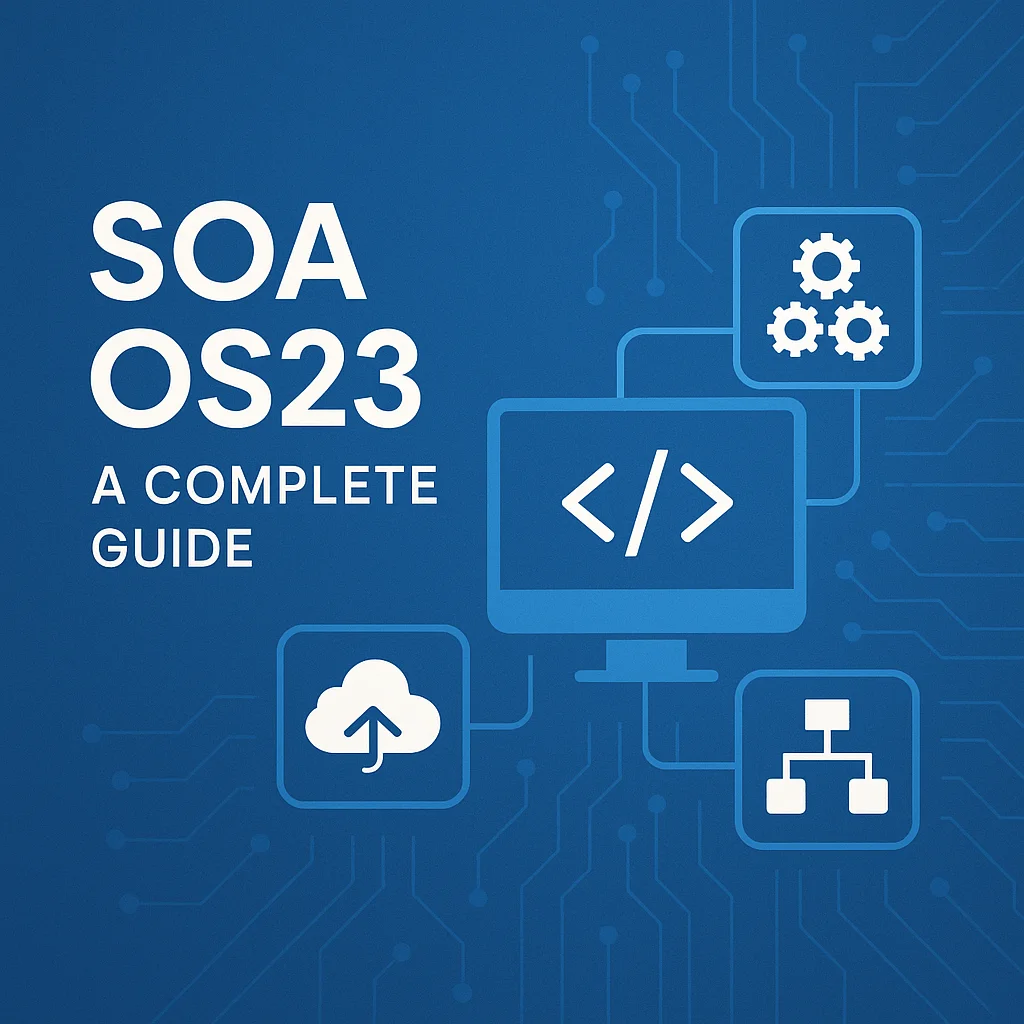In today’s fast-paced digital landscape, staying ahead means understanding the latest technologies like soa os23. Whether you’re a developer, IT manager, or tech enthusiast, grasping what soa os23 offers can position you for smarter systems management and scalable software architecture.
This in-depth guide explores soa os23, its benefits, application steps, best practices, FAQs, and pro insights. Let’s dive in!
Introduction
Soa os23 is gaining traction as a modernized framework within Service-Oriented Architecture (SOA) systems. It streamlines how services communicate, ensuring greater interoperability, security, and efficiency for enterprises managing distributed applications.
Why is soa os23 significant? It simplifies complex service structures, offering a standardized, reliable, and scalable way for businesses to manage and deploy services across various platforms.
Related Term: os23 soa — often used interchangeably, this term emphasizes the operating system adaptations within the soa os23 environment.
Benefits of Soa os23
Integrating soa os23 into your enterprise setup delivers multiple operational, security, and financial benefits.
How It Helps in Digital Infrastructure Management
- Seamless service orchestration across cloud, on-premises, and hybrid systems.
- Enhanced data security and integrity protocols.
- Consistent API management and service routing.
- Reduction in system downtime due to built-in redundancy.
Soa os23 ensures businesses can maintain high availability and optimized performance, especially in industries like finance, healthcare, and e-commerce.
Key Advantages for Developers & IT Managers
- Standardized service deployment reducing configuration errors.
- Simplified debugging and monitoring with built-in tools.
- Improved system scalability without overhauling existing infrastructure.
- Cost-effective management through modular service distribution.
These advantages make soa os23 an essential tool for businesses aiming for operational excellence and technological resilience.
How to Use/Apply Soa os23
Getting started with soa os23 doesn’t have to be complex. Follow these steps for a smoother implementation.
Step-by-Step Guide
- Assess your current SOA framework — Identify gaps and areas for improvment.
- Download the latest soa os23 distribution from an official or verified source.
- Install core services and dependencies on your chosen platforms.
- Configure service endpoints and security protocols.
- Deploy microservices or service modules incrementally to test stability.
- Integrate monitoring and alert systems.
- Conduct end-to-end system testing.
- Optimize configurations based on performance reports.
Pro Tip: Use virtualization tools and containerization (like Docker) to enhance deployment flexibility with soa os23.
Common Mistakes to Avoid
- Skipping security configuration checks.
- Deploying without a rollback strategy.
- Ignoring API versioning protocols.
- Overloading servers without load balancing.
- Neglecting routine service health audits.
Avoid these pitfalls to ensure a smooth, secure, and efficient rollout of soa os23 in your infrastructure.
Best Practices for Soa os23
Optimizing your use of soa os23 involves adopting strategic practices recommended by industry experts.
Tips & Tricks for Better Results
- Utilize service registries for dynamic service discovery.
- Implement asynchronous messaging queues to reduce latency.
- Regularly update security patches and version controls.
- Integrate AI-based monitoring tools for predictive analytics.
- Perform stress testing before full-scale deployment
By following these tactics, you can maximize the stability and efficiency of your soa os23 environment.
Expert Recommendations
- Always backup your service configurations and logs.
- Use container orchestration platforms like Kubernetes to manage service clusters effectively.
- Establish clear documentation for every service interaction within soa os23.
- Schedule quarterly audits to assess service performance and compliance.
Following these expert-backed recommendations will strengthen your system’s reliability and adaptability.
FAQs About Soa os23
What is soa os23 used for?
Soa os23 is used for structuring and managing distributed services within a Service-Oriented Architecture, promoting efficient service communication, security, and scalability.
Is os23 soa the same as soa os23?
They’re closely related terms. os23 soa typically refers to the operating system layer integrated within the soa os23 framework. Both terms are often used interchangeably in IT documentation.
How does soa os23 improve system performance?
By providing modular, independently managed services, soa os23 reduces system bottlenecks, improves service routing, and ensures dynamic scalability without major infrastructure changes.
Can small businesses benefit from soa os23?
Yes! Even small businesses using microservices or cloud-native applications can leverage soa os23 for streamlined service management and enhanced operational reliability
Conclusion
Soa os23 stands out as a versatile, scalable, and secure framework in modern Service-Oriented Architectures. Whether you’re a developer deploying microservices or an IT manager overseeing enterprise systems, integrating soa os23 can transform your digital operations.
Key Takeaways:
- Ensure consistent security and monitoring.
- Avoid common deployment mistakes.
- Follow expert-recommended best practices.
- Stay updated with the latest soa os23 releases and features.


